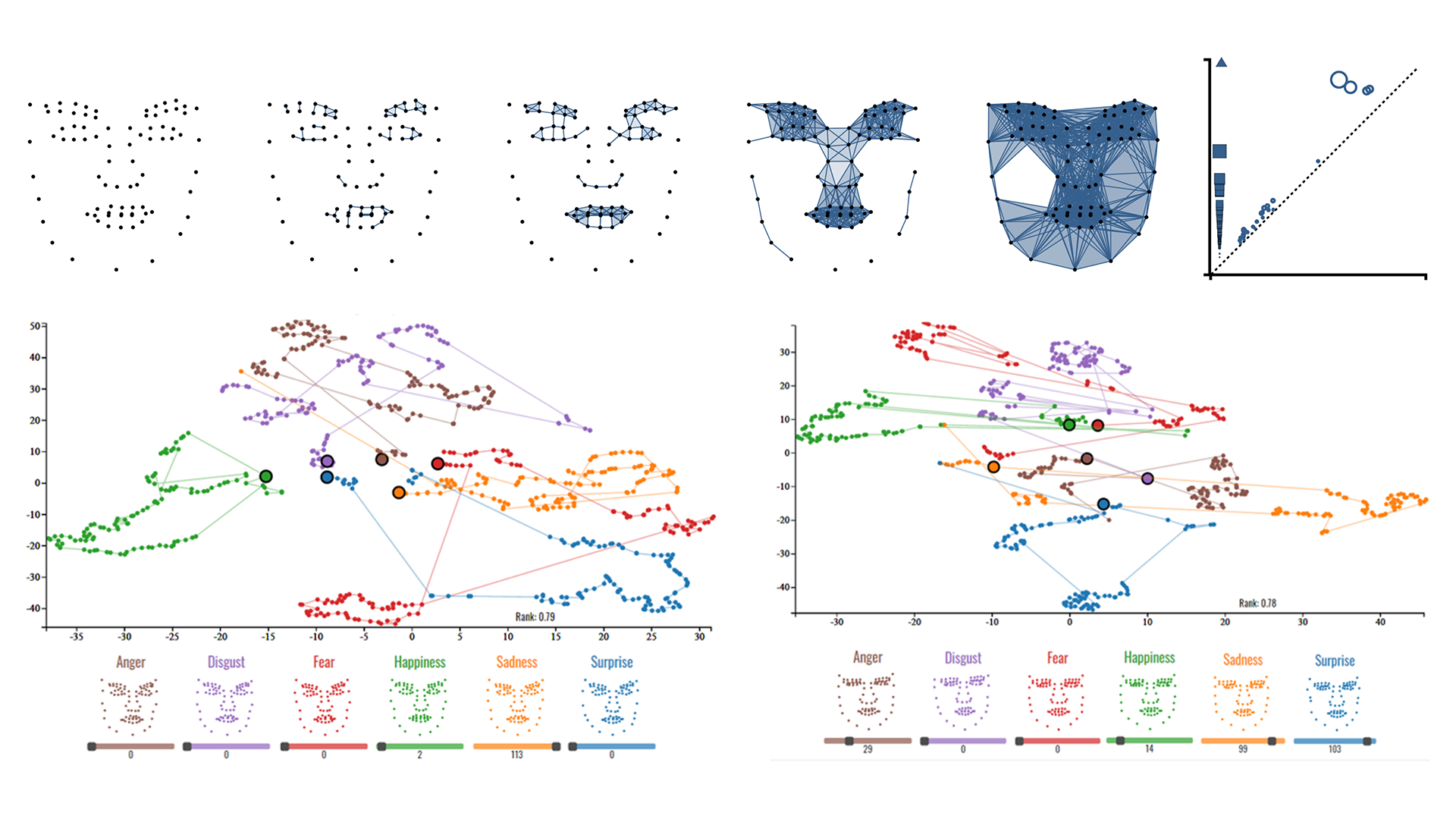AffectiveTDA: Using Topological Data Analysis to Improve Analysis and Explainability in Affective Computing
Hamza Elhamdadi, Shaun Canavan, Paul Rosen
External link (DOI)
View presentation:2021-10-27T13:00:00ZGMT-0600Change your timezone on the schedule page
2021-10-27T13:00:00Z

Fast forward
Direct link to video on YouTube: https://youtu.be/KgQhn8BgztQ
Abstract
We present an approach utilizing Topological Data Analysis to study the structure of face poses used in affective computing, i.e., the process of recognizing human emotion. The approach uses a conditional comparison of different emotions, both respective and irrespective of time, with multiple topological distance metrics, dimension reduction techniques, and face subsections (e.g., eyes, nose, mouth, etc.). The results confirm that our topology-based approach captures known patterns, distinctions between emotions, and distinctions between individuals, which is an important step towards more robust and explainable emotion recognition by machines.